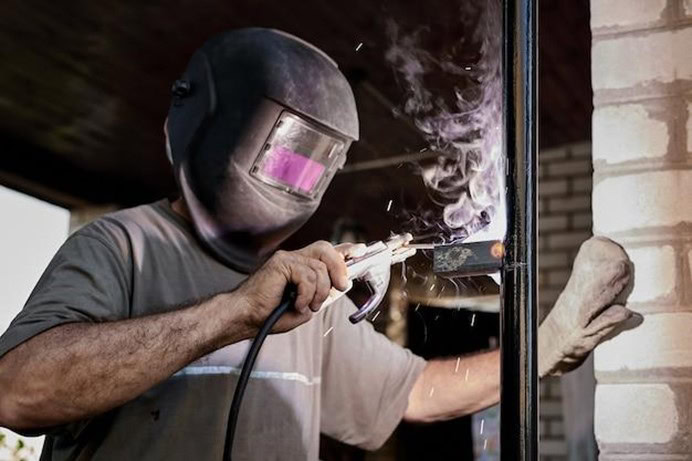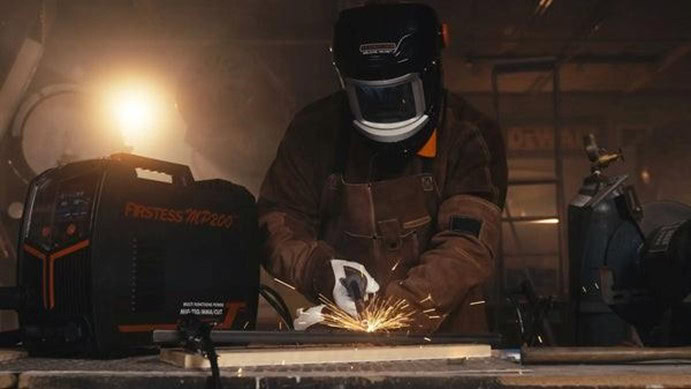Welding is the basis of modern manufacturing and is fundamental to the creation of vehicles, aircraft, buildings, and ships. Put simply, it is a process where two or more metals are melted on their surfaces so called fusion bonding. While welding has many applications and is a highly practical process, traditional welding techniques also have general environmental impacts around air pollution, energy use, and waste production.
With growing global awareness of environmental issues, the welding industry has to adopt eco-friendly practices to mitigate these impacts seriously. Hereunder are tips and guides on how to reduce the environmental footprint of welding operations in 2024 and beyond.

Environmental Issues in Welding
The environmental effect of welding is multi-dimensional. Of greater concern are the welding fumes and gases that are emitted in the process. The welding process produces gases and fumes of dangerous components. When these are inhaled they cause various health hazards including inconveniences in the chest and respiratory problems to serious complications such as metal fume fever and lung cancer. Moreover, this gas emission is responsible for air pollution, which in turn has ramifications effects on the environment.
Other important environmental considerations of welding relate to energy consumption. It may be vital in many countries that heavily rely on majorly fossil fuels to generate electricity.
Third is the generation of waste. In welding operations, there are different kinds of waste, such as used welding rods, electrodes, and consumables. Most of these materials contain hazardous materials that, when disposed of or recycled, may pollute the environment. Improperly disposed welding waste can contaminate lands and waters, increasing adverse environmental impacts.
Regulatory Standards of Compliance
To counter all these environmental issues, several regulatory standards have been enacted. These are the standards that businesses are required to adhere to in a bid to reduce the negative environmental impacts of welding. For instance, the International Organization for Standardization established ISO 14001, a standard that creates a framework within which an organization can manage its environmental responsibilities.
Another general provision of regulatory initiative that aims at environmental sustainability is the Eco-Management and Audit Scheme of the European Union. EMAS calls upon a firm to examine its environmental performance, set targets on the same, monitor progress, and report on its performance.
While complying with these standards is a must in most countries, it means a lot more for businesses: showing a conscientious attitude towards being environmentally responsible. Adherence to these standards will help companies minimize their ecological footprint, enhance their image, and possibly become eligible for some government incentives or grants.
Welding Machine Suppliers in Sustainability
Welding machine suppliers have a big role to play in the welding industry to promote sustainability by providing a wide range of eco-friendly welding machines. Welding machine wholesale gives an economy of scale, and this could lower the cost of these machines, which would enable their purchase for a wider array of businesses. It also helps spread the importance of green welding in the industry.
Moreover, suppliers can foster greater awareness among businesses toward the advantages offered by welding practices that are eco-compatible. They may disseminate information and share resources related to energy efficiency, waste minimization, and regulatory compliance to better inform their business decisions on welding practices.
Strategies for Welding with Least Environmental Impact
The following are some of how businesses largely mitigate the impacts of welding on the environment. One of them is by providing welder training and education that pertains to environmental best practices. These include techniques such as proper ventilation and filtration safety handling and disposal protocols for welding materials.
Another effective strategy is to implement waste management and recycling programs. Segregation of waste materials and recycling properly will bring down the total waste at landfill sites. This will not only reduce the environmental impact of waste disposal but also provide raw materials for new products.
The space encouraging the research and development of ecologically friendly welding technologies would remain an important sector in the welding industry. New materials are also a promising way to go. Some companies are already looking to develop biodegradable materials for welding.
Eco-Friendly Welding Techniques

One of the most important strategies for individuals to mitigate the harmful environmental impacts of welding operations is the adoption of eco-friendly welding techniques. One of the techniques involves the implementation of low-emission welding processes. Metal Inert Gas (MIG) welding, also known as Gas Metal Arc Welding (GMAW), remains highly popular as its fume emissions are relatively minimal compared to other processes. Another of the low-emission processes is Tungsten Inert Gas (TIG) welding, hence producing lesser spatters, which results in less wastage and cleaning time.
Energy-efficient welding equipment is also a big consideration. Modern welding machines incorporate the criteria for saving energy through features that put the machine into a sleeping mode to lower the consumption of power while the machine is not in use. Most machines also have more efficient power supplies, meaning a more economical rate of electricity consumption during active states.
Further, ventilation and filtration systems are very important features for the reduction of environmental impact from welding fumes. Adequate ventilation helps to disperse the fumes rapidly, which in turn reduces the concentration of potentially hazardous substances in the air. Filtration captures the substances and removes them rather than releasing them into the environment.
Green Welding in the Future
The future of welding shall constitute more of the sustainable practices. Contributions for the same can be derived from advanced technologies like automation and robotics. This will curb material wastage and energy inefficiencies to greater extents done by the welding system as these advanced technologies work on a precise and consistent parameter.
A further development area within which true green potentials open regards the development of new biodegradable welding materials, being materials able to bring a reduction in the environmental impact of waste throughout the welding process.
Businesses that want to chase greener options can take this trend of sustainability forward as the market grows for welding services and products. With the desire for green prospects by consumers and businesses in the contemporary world, every entity that can provide them is likely best positioned to take advantage of the opportunity.
Eco-friendly welding processes—it’s not just a trend; it’s an imperative for the future. It is a shared responsibility for authorities, manufacturers, suppliers, and welders to make sure that their welding operations become green welding.


















